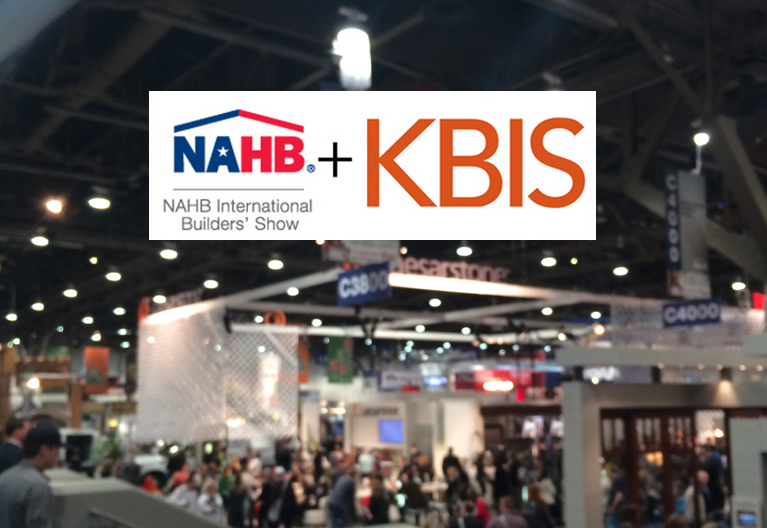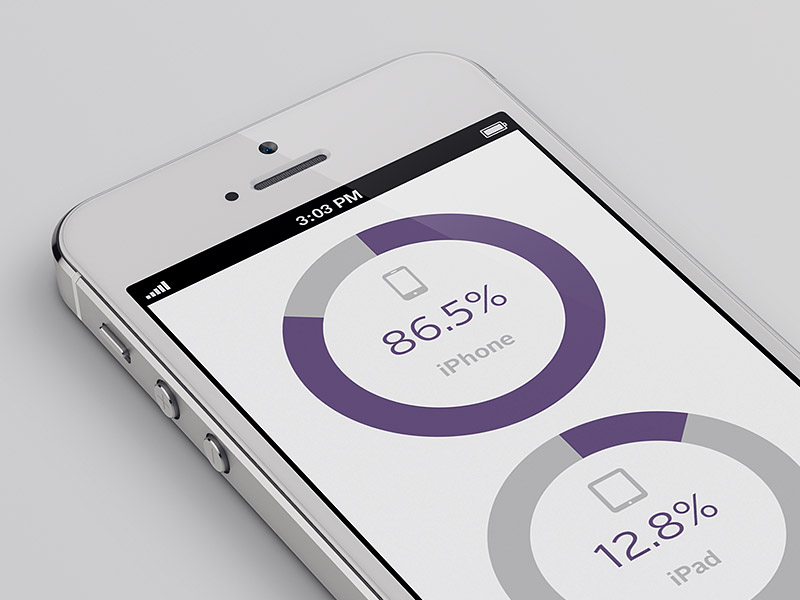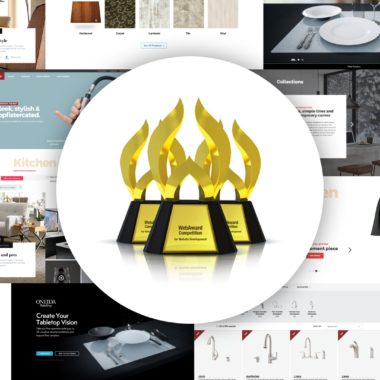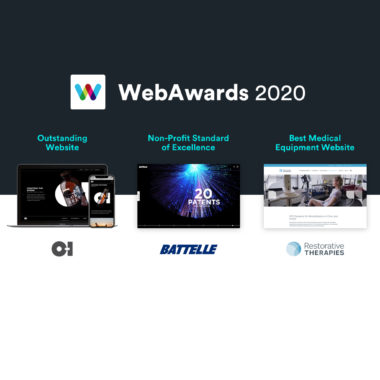Connected Technology in the Home: A Report from IBS & KBIS 2014
A few weeks ago, I wrote a primer on the Internet of Things. Around the same time, I had the opportunity to attend the combined NKBA Kitchen and Bath Industry Show (KBIS) / NAHB International Builders’ Show (IBS) Feb. 4-6 in Las Vegas.
One of my goals at the show was to seek out internet-connected products/appliances/fixtures for the home, and see if anything looks really promising. By promising, what I was really looking for was “open connectivity” across all sorts of devices for the home directly from the big manufacturers that exhibit at these shows. Open connectivity is the ability for developers/tinkerers/makers/hackers to come in and jam things together for a really new and blended experience.
What I experienced at the show was a lot more “smart” products and platforms to manage homes and workplaces, but not necessarily the ingredients for a truly smart environment. To explain what I mean, I’ll start with this post about environmental controls (air, lights, security). In a later post, I’ll talk about smart objects (like appliances).
Controlling your Environment (from Anywhere)
At the show, I checked out products from a number of manufacturers and service providers with solutions to help control your home environment through a smartphone, tablet, TV screen or wall-mounted display interface – from within the home, or from anywhere in the world. I suppose the techy way to think of it is “remotely viewing sensor data and controlling switches.”
There is certainly an overlap in what manufacturers offer, but the products you’ll find include categories such as:
- Indoor Air Quality monitoring
- Building automation
- Energy management
- Environment sensors
- Home automation
- Home control
- Home networks
- Home video/audio management
- Lighting control
- Safety products
- Security systems
- Temperature monitoring & control
When you think about it, this really encompasses the primary living and entertainment needs inside buildings. And really, remote feedback and adjustments aren’t things which we’re seeing for the first time. But it seems that some of the newer players and platform updates are making things easier.
For a background on what is really powering all of these solutions, check out the Z-Wave Alliance and Zigbee Alliance for more on the myriad products that are being connected via one of these two competing standards. There are many more products out there than those being connected today for the home.
Here’s a short summary of what I saw at the shows:
- Honeywell International – remote control of HVAC; Home Control platform and console
- Legrand Home Systems – Home Control platform and console; lots of other wiring devices
- Nexia Home Intelligence – Multi-brand Home Control platform and console (Schlage, Trane, American Standard), with monthly fees but more complex triggers and actions
- Leviton Security & Automation – Home Control platform and console, nice interface (installer programmed); lots of other products that can connect to many other platforms
- AT&T Digital Life – Home Control platform and console, 24/7 monitoring service, a focus on security
- Lennox Industries – remote control of HVAC
(Absent from these shows, but demonstrated at the Consumer Electronics Show (CES), is Lowe’s Iris Home Management platform – a solution they launched in 2012 that has Lowe’s combining with many of the brands above and more, supporting Z-Wave, Zigbee and Wi-Fi devices, with ongoing fees for premium features.)
The main thing to understand is that each home control platform is really a bunch of devices that communicate (primarily via Z-Wave, Zigbee or another protocol) to a branded base station – the devices then are controlled through a branded wall-mounted touchscreen or from your tablet/smartphone/website. What each company provides is some combination of features, interface, services and setup that makes their solution unique. Some focus on air quality, some lead with lighting, some lead with security.
During my quick tour of the combined shows, I tried to get all the tradenames, trademarks, divisions, and organizational structures right, but it’s certainly confusing in trying to understand the displays, literature and conversations I had with company representatives. I expect that consumers and trade professionals who are considering these products must be very confused.
Let’s take a closer look at each of these in turn.
Honeywell International
Honeywell is a conglomerate of many types of consumer and industrial products, but for the home the company has products that are marketed from their HVAC & Air Quality group, and also from the Security Group. Yes, there is overlap; yes it is confusing.
The HVAC & Air Quality group are offering a number of “Total Connect Comfort” thermostats, air quality sensors, and security devices that allow homeowners to control and manage their environment from iOS or Android interfaces. The devices talk to a gateway/base via Honeywell’s proprietary RedLINK protocol that operates in the 900 MHz bandwidth. The gateway then connects over Wi-Fi to allow access from anywhere, including multiple buildings and zones.
But the Honeywell Security people have taken their “Tuxedo MyStyle” home control and lifestyle management platform much further. This is a platform that can control lights, thermostats, locks, cameras, shades, etc. This platform uses the Z-Wave protocol to connect devices to a central gateway. For all intents and purposes, the controller is the exciting piece here (because the Z-Wave alliance was formed in 2005), and it includes a built-in web server to let you control anything from anywhere (smartphone or web browser). Users can set up combinations of scenes and triggers.
In the home automation world, a “scene” basically means do several things at once. Anything you can accomplish by pushing several remote control buttons on different devices, you can also accomplish by pushing just one (or triggering one event). Like when I leave the house, I might want to lock doors, turn on monitoring cameras, close blinds, and set outdoor lighting all at the same time.
The equivalent in the internet of things world would be to access all of these devices – Honeywell’s and anyone else’s – from my own custom app, or from my website. What’s cool is that Honeywell is actually partnering with Akuacom, Opower, Control4, and Lutron to allow this. The “Comfort Control” API, which will allow development partners to create their own experiences and services to integrate with devices from the manufacturers. That’s actually pretty exciting and should open the door to more interesting solutions.
Legrand Home Systems
Legrand’s Home Systems Division markets the On-Q products brand, another in the lineup of consolidated intercom, camera, multi-room audio, lighting control, networkings, etc. with its own Unity-branded LCD console/controller. While credit is due to their many years of offering these products, none of this seems ready to inter-connect with non-Legrand platforms. But they do have some cool cord management solutions, charging stations, pop-up outlets, and fancy switchplate products that are worth a look if you’re doing a remodel or new construction.
Nexia Home Intelligence
Schlage (who you know as the lock people) rolled out their Schlage LiNK Z-Wave-based platform in 2009. In 2012, this platform was re-branded as Nexia Home Intelligence. Trane (the HVAC people) were showing off Nexia in their booth for the digital thermostat, but the platform provides an onramp to all the same types of products as mentioned above. One issue with this platform is a monthly fee for remote access to extra features – other platforms have no ongoing fees. However, the capabilities are more extensive because you can create better triggers and action steps for the devices you can connect (“if this and/or this, then do this and this”).
Leviton
Add Leviton to the list of companies that sells pretty much everything electrical and more. While they focused early on with lighting control, they are one of the founding members of the Z-Wave alliance, and in 2012 acquired Home Automation, Inc. (now Leviton Security & Automation group) to add security, entertainment, and energy management solutions. At the show they were showing off their OmniTouch touchscreen controller which can control, as expected, a wide range of products from security, lighting, HVAC, cameras and audio. Unfortunately, like Legrand, this is a closed system, and an installer has to come program the connected solution for you. (This product also won the Human Interface Product of the Year at the 2014 Consumer Electronics Show.)
Leviton also has many products that support most other standards, so they can mix and match with other manufacturers.
AT&T Digital Life
The Digital Life platform from AT&T is just one more to consider. AT&T demoed their products in a “NextGen iModule Home” (one of many homes built in the parking lot for the week). The difference is that their platform, launched in early 2013, includes 24/7 home monitoring services, unlike the other platforms above, where you’re on your own. This might appeal to people who already have a security system from a traditional competitor, and want features of a smart home, but don’t want to do it themselves. You pay monthly fees for more features, from a menu of prices.
Lennox Industries
Lennox, known for their HVAC products, is also in the game with their iComfort Wi-Fi thermostat platform – it looks basically the same as Honeywell or Trane, with its own screens, iOS apps and website access. One thing to add is that these products aren’t just about changing the temperature: there are behind the scenes elements that control multiple zones, vary fan temperatures, and so forth.
Unfortunately this platform, like all the others, just doesn’t follow you around and observe your thermal stress or determine there’s a party going on and take care of making you warmer or cooler without asking first.
So there you have it.
The HVAC people, the security people, the lighting people, the music people, the electrical people, and the phone/TV people are all up in each others’ business. And for the most part, they aren’t focused on interesting ways to really automate a smart home – you’re still in charge and flipping the switches. It’s just that the switches are now on the screen in your pocket.
Click through to read my my second post on some of the “smarter” connected appliances and fixtures that were demonstrated at IBS and KBIS, and some that have digital embedded just for the wow factor.
If you want to know more, make a clarification or start a conversation, follow me on Twitter @mobial, or leave a comment below!












